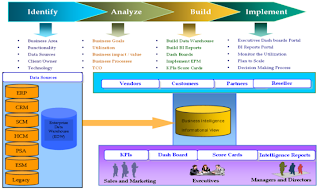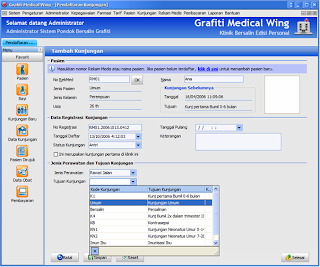IT service providers are big on talk of innovation these days except when it comes to their own sales practices. It seems as if many vendor sales teams have been pulling from the same bag of frustrating and ineffective tricks to try to win deals since the dawn of IT outsourcing.
We narrowed the long list of the offending outsourcing sales techniques to the ten least-effective and often-offered suggestions for how IT service providers can reshape their peddling processes for the benefit of their potential customers and themselves.
1. Can You Hear Me Now? Some outsourcing sales folk have a knack for selective listening. "Customers have specific requirements, needs and objectives that they expect to accomplish through outsourcing," says Marc Tanowitz, prinicipal with outsourcing consultancy Pace Harmon.
"However, we frequently see [outsourcers] packaging services based solely on their own business needs and approaches." It's the most common customer complaint about outsourcing sales, says Ron Walker, principal for KPMG Advisory Services.
Michael Engle, managing partner at outsourcing consultancy HfS Consulting, calls it the "hammer looking for a nail" technique: "They simply bend the client's needs to better fit their [own] proposed solution, and then delude themselves into thinking they have a winner."
Alternative for IT service providers: Take time to listen to customer needs before launching into a standard pitch. "This approach enables providers to align better with what customers are actually looking for and to present solutions in the way that is most meaningful to them," says Tanowitz.
2. A Little Knowledge Is a Dangerous Thing Then you have the salesperson who does just enough research to do real damage. "It is always interesting to watch a sales team that is smart enough to know what not to do, but not quite adept enough to know what to do instead," says HfS Consulting's Engel. "They come into a meeting loaded-for-bear, then just start blasting away: How will this impact your EBITDA? What is your current Premium-to-Loss ratio? Will this model be accretive to your business? All good questions when asked in the right context, but not as the lead punches in mid-level room."
Alternative for IT service providers: Put sales on mute. "Salespeople play a critical role in any pursuit, but they should be seen and not heard," says Esteban Herrera, COO of outsourcing analyst firm HfS Research. "Clients want to speak with subject matter experts."
3. Death By a Thousand Slides If you've ever sat in on a sales call, you might wonder whether commissions were based on size of PowerPoint presentations. But these electronic one-way conversations do little to further the outsourcing pursuit.
Alternative for IT service providers: Ditch the preso. "Clients are so used to slides that what will stick out in their mind the most is someone who came to have a conversation with them, not talk atthem," says Herrera. "You know all your competitors are going to attempt PowerPoint murder, so why not stand out in the crowd?"
source : http://www.networksasia.net/
We narrowed the long list of the offending outsourcing sales techniques to the ten least-effective and often-offered suggestions for how IT service providers can reshape their peddling processes for the benefit of their potential customers and themselves.
1. Can You Hear Me Now? Some outsourcing sales folk have a knack for selective listening. "Customers have specific requirements, needs and objectives that they expect to accomplish through outsourcing," says Marc Tanowitz, prinicipal with outsourcing consultancy Pace Harmon.
"However, we frequently see [outsourcers] packaging services based solely on their own business needs and approaches." It's the most common customer complaint about outsourcing sales, says Ron Walker, principal for KPMG Advisory Services.
Michael Engle, managing partner at outsourcing consultancy HfS Consulting, calls it the "hammer looking for a nail" technique: "They simply bend the client's needs to better fit their [own] proposed solution, and then delude themselves into thinking they have a winner."
Alternative for IT service providers: Take time to listen to customer needs before launching into a standard pitch. "This approach enables providers to align better with what customers are actually looking for and to present solutions in the way that is most meaningful to them," says Tanowitz.
2. A Little Knowledge Is a Dangerous Thing Then you have the salesperson who does just enough research to do real damage. "It is always interesting to watch a sales team that is smart enough to know what not to do, but not quite adept enough to know what to do instead," says HfS Consulting's Engel. "They come into a meeting loaded-for-bear, then just start blasting away: How will this impact your EBITDA? What is your current Premium-to-Loss ratio? Will this model be accretive to your business? All good questions when asked in the right context, but not as the lead punches in mid-level room."
Alternative for IT service providers: Put sales on mute. "Salespeople play a critical role in any pursuit, but they should be seen and not heard," says Esteban Herrera, COO of outsourcing analyst firm HfS Research. "Clients want to speak with subject matter experts."
3. Death By a Thousand Slides If you've ever sat in on a sales call, you might wonder whether commissions were based on size of PowerPoint presentations. But these electronic one-way conversations do little to further the outsourcing pursuit.
Alternative for IT service providers: Ditch the preso. "Clients are so used to slides that what will stick out in their mind the most is someone who came to have a conversation with them, not talk atthem," says Herrera. "You know all your competitors are going to attempt PowerPoint murder, so why not stand out in the crowd?"
source : http://www.networksasia.net/






 16.40
16.40
 Agung Budi Prasetio, S.T, M.Eng
Agung Budi Prasetio, S.T, M.Eng

 Posted in:
Posted in: 








































